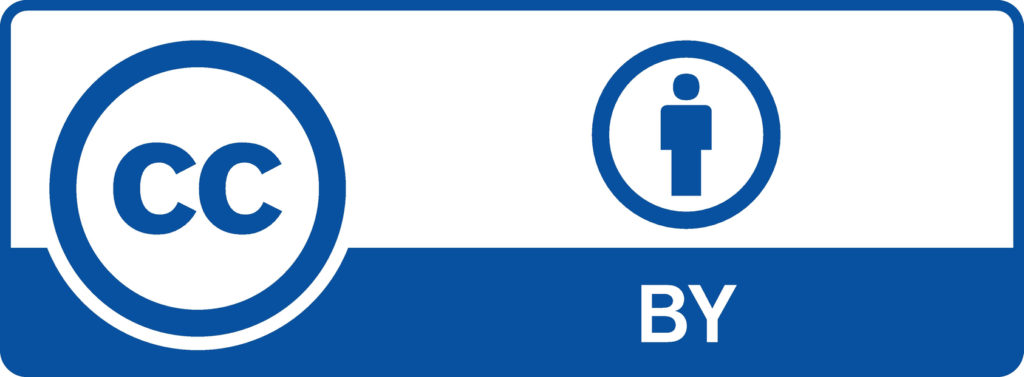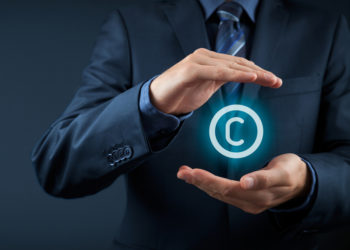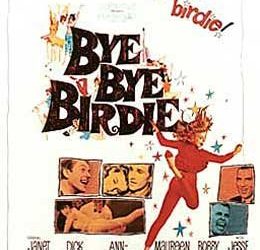Editor’s Note: Today’s post is by Melody Herr, PhD. Melody has more than 20 years of professional experience in scholarly communications and scholarly publishing. Formerly an acquisitions editor for the University of Michigan Press, she currently heads the Office of Scholarly Communications at the University of Arkansas, Fayetteville. She recently published Writing and Publishing Your Book: a Guide for Experts in Every Field (2017).
Creative Commons released the first version of its eponymous licenses in 2002, in protest against what its founder, Lawrence Lessig, termed the “permissions culture.” Arguing that media corporations barricaded cultural works behind copyright law and granted access only through complex, costly licensing agreements, he called for a “free culture” where the creation-use-creation cycle flourishes. In his vision, Creative Commons licenses serve as entrance passes to a hospitable “semi-commons” where creators set the rules governing use of their works and users may safely graze (Lessig, 2004).

Creative Commons (CC) licenses do not introduce a new regime. Not at all. They assume that particular rights in a work exist, that its creator owns these rights, and that the creator may transfer them to another party – all assumptions established by the US Copyright Act. I’m not the first to make this observation. Legal scholars warn that the CC licensing system does not substitute for legislative reform and, indeed, may reinforce the commodification of creative works (Dusollier, 2006; Ekstrand et al., 2013; Elkin-Koren, 2005).
Today, I’m not going to enter the debate over open access and open culture; I will neither criticize nor advocate for CC licenses. Rather, I’m interested in how US federal courts evaluate infringement claims and determine statutory damages in cases related to works released under the licenses. In a recent study, I examined about two dozen cases, with initial filing dates running from December 2014 through October 2018, retrieved from the database Westlaw. Although some of the cases on which I base this discussion deal with works released under previous versions of the CC licenses, these do not differ significantly from the current version, 4.0 International. Here, I present a high-level overview of that study for anyone who engages with CC licenses: creators and users, publishing professionals and library professionals, advocates for and skeptics of open culture. Readers seeking more details may consult “The Interpretation of Creative Commons Licenses by US Federal Courts.”
A Valid Agreement?
A copyright holder builds a CC license using three of the four modules: Attribution (BY), Noncommercial (NC), No Derivatives (ND), and ShareAlike (SA). Every license must include the BY provision; because SA applies only to derivative works, SA and ND are incompatible. As a result, there are six potential combinations. The legal code for every one of these opens with the declaration: “By exercising the Licensed Rights (defined below), You [the user/licensee] accept and agree to be bound by the terms and conditions of this Creative Commons Attribution 4.0 International Public License (“Public License”).” Thus, use of the licensed work constitutes a valid agreement between the licensor (rights holder) and the licensee (user). As the court confirmed in Philpot v. Media Research Center Inc., a copyright holder may offer a nonexclusive license unilaterally; a CC license does not require a “meeting of the minds” to take effect.
The CC licenses’ “Term and Termination” section is equally succinct: “However, if You fail to comply with this Public License, then Your rights under this Public License terminate automatically.” Thus, by violating the license, users may commit copyright infringement. And licensors may file infringement claims and seek remedies.
In the cases I examined, the courts evaluated CC licenses according to the principles of contract law; they scrutinized the texts word-for-word and frequently quoted them. Finding the language non-ambiguous and non-technical, the courts declined testimony from outside experts. Yet, the courts’ literal reading did not always align with the plaintiffs’ desired reading. In Philpot v. WOS, Inc., the plaintiff argued that merely hyperlinking to the Wikimedia pages where he offered his photographs did not provide sufficient attribution. The court confirmed that the defendant had indeed satisfied the CC license’s requirement for attribution “in any reasonable manner.” Likewise, in Drauglis v. Kappa Map Group, LLC, the court rejected the plaintiff’s demand for a more prominent credit line on the photo used on the front cover of a street atlas.
The question of noncommercial use arose occasionally in the context of a Fair Use defense, which courts evaluated according to the four factors laid out in US Copyright Act §107, without reference to the CC license. Otherwise, the dearth of cases centering on the NC provision may corroborate Creative Commons’ own findings in a 2009 study that creators and users interpret the term noncommercial use as applied to online content in similar ways. Such concurrence would presumably reduce the number of legal disputes. In Great Minds v. FedEx Office and Print Services, Inc. where the issue was noncommercial use, the plaintiff revealed a lamentable ignorance of contract law. Great Minds released educational materials under a CC-BY-NC-SA license and brought suit against FedEx for reproducing them for a school district. The court found the license silent on the issue of employing third parties and, barring an express prohibition, contract law allows parties to the agreement to employ third parties to carry out their rights and obligations. In this instance, FedEx was not a party to the license; it was merely working on behalf of the actual licensee, the school district. The court dismissed the case.
These examples should reassure users that courts will not permit a licensor to enforce idiosyncratic terms. At the same time, these cases serve as a warning for the copyright holder who seeks to dictate the specifics of attribution or to prevent anyone, including a third party, from profiting from the work in any way. A conventional license, rather than a CC license, would better serve such a purpose.
Remedies
Without discounting copyright holders’ sincere interest in governing the uses of their work, the anticipation of a lucrative settlement or a substantial award may motivate certain lawsuits. As mentioned previously, every version of the CC licenses makes compliance with all its terms a condition for use of the work. Noncompliance terminates the license, resulting in copyright infringement. Calculating actual damages (e.g., profits gained or expenses saved by the defendant; revenue lost by the plaintiff) resulting from an infringement is difficult, and most copyrighted works have a relatively low monetary value. Consequently, §504 of the US Copyright Act provides for generous – some would say disproportionate and punitive – statutory damages: no less than $200 for innocent infringement and as much as $150,000 for willful infringement. And the copyright owner chooses whether to pursue actual or statutory damages.
How did the courts evaluate a defendant’s liability for statutory damages? To determine if the infringement was willful, they took into account the defendant’s presumed understanding of copyright law and the visibility of the copyright notice on the work as well as the available evidence concerning the infringing act. To calculate the award amount, case law has established the treble rule:
statutory damages = 3 x standard license fee for the work
Of course, CC licenses make nonsense of this equation because they have no fee. In Philpot v. LM Communications II of South Carolina, Inc., the court found that the defendant had not committed infringement willfully and based an award of $3500 on an earlier case in which the same plaintiff had received $5000 in statutory damages in a default judgment. This was the lowest award in the cases I identified; the highest was $10,500 (Philpot v. Scene Entertainment, LLC). Although this figure is not astronomical, the judge also granted the plaintiff $12,910 in attorney’s fees and $844.33 in costs, as permitted by §505 of the US Copyright Act. Clearly, infringement of copyrighted work offered under a “free” CC license can be quite expensive.
Precedents and Unresolved Questions
The two dozen cases that I identified may not seem like many; and none appear particularly high-profile. Yet I saw the courts citing cases within this group, using earlier ones as guides for subsequent ones. To my knowledge, the courts have not yet addressed issues, such as the application of CC licenses to downstream uses, especially derivatives combining various works with incompatible licensing terms, that legal scholars have identified as potentially problematic (Dusollier, 2007; Elkin-Koren, 2005). Therefore, I encourage Scholarly Kitchen readers to pay attention as case law emerges regarding CC licenses and other types of open licenses.
Parting Words
I’d like to conclude with a few recommendations for users and copyright holders (a.k.a. creators). Users, remember, that in choosing CC licenses, copyright holders do not surrender their rights: they can and do pursue those who commit infringement by violating the license terms. Copyright holders, if you desire rigorous control over your work, you should consider a conventional licensing scheme. Regardless of your choice, registration with the copyright office is a prerequisite for filing a legal action for infringement (US Copyright Act § 411). Make the copyright mark and the CC license obvious in order to warn potential users and, if infringement does occur, to persuasively assert that the person acted willfully.
Finally, whatever your role in the ecosystem of creative and scholarly production, dissemination, and consumption, treat CC licenses as valid legal agreements; US federal courts do. And take time to familiarize yourself with the essentials of contract law as well as copyright law.
Cases Cited
*Note: If the case is reported in the Federal Supplement, I provide only that citation. If it is not, I provide the Westlaw citation.
Drauglis v. Kappa Map Group, LLC, 128 F.Supp.3d 46 (District of Columbia 2015).
Great Minds v. FedEx Office and Print Services, Inc., (E.D. New York 2017), aff’d, 886 F.3d 91 (2nd Cir. 2018).
Philpot v. LM Communications II of South Carolina, Inc., 343 F.Supp.3d 694 (E.D. Kentucky, Central Division 2018), aff’d, 776 Fed.Appx. 906 (6th Cir. 2019).
Philpot v. Media Research Center Inc., 279 F.Supp.3d 708 (E.D. Virginia 2018).
Philpot v. Scene Entertainment, LLC, (E.D. Louisiana 2019). Not published in the Federal Supplement; Westlaw citation: 2019 WL 3387945.
Philpot v. WOS, Inc., (W.D. Texas, Austin Division 2019). Not published in the Federal Supplement; Westlaw citation: 2019 WL 1767208.
Sources Cited
Dusollier, S. (2006). The master’s tools v. the master’s house: Creative Commons v. copyright. Columbia Journal of the Law & the Arts, 29(3), 271-294.
Dusollier, S. (2007). Sharing access to intellectual property through private ordering. Chicago — Kent Law Review, 82(3), 1391-1438.
Ekstrand, V.S., Famiglietti, A., Nicole, C. (2013). The intensification of copyright: Critical legal activism in the age of digital copyright. IDEA: The Intellectual Property Law Review, 53(3), 291-322.
Elkin-Koren, N. (2005). What contracts cannot do: The limits of private ordering in facilitating a creative commons. Fordham Law Review, 74(2), 375-422.
Discussion
2 Thoughts on "Guest Post — Creative Commons in Court"
Melody, thank you for providing this update! We’ve been using CC licenses across the industry for nearly 20 years, and this is the first article I’ve seen that reviews how those licenses perform during litigation. You filled a gap in our collective knowledge with this unique post to the Kitchen – kudos.
Excellent article and so very helpful. Thank you:-)



